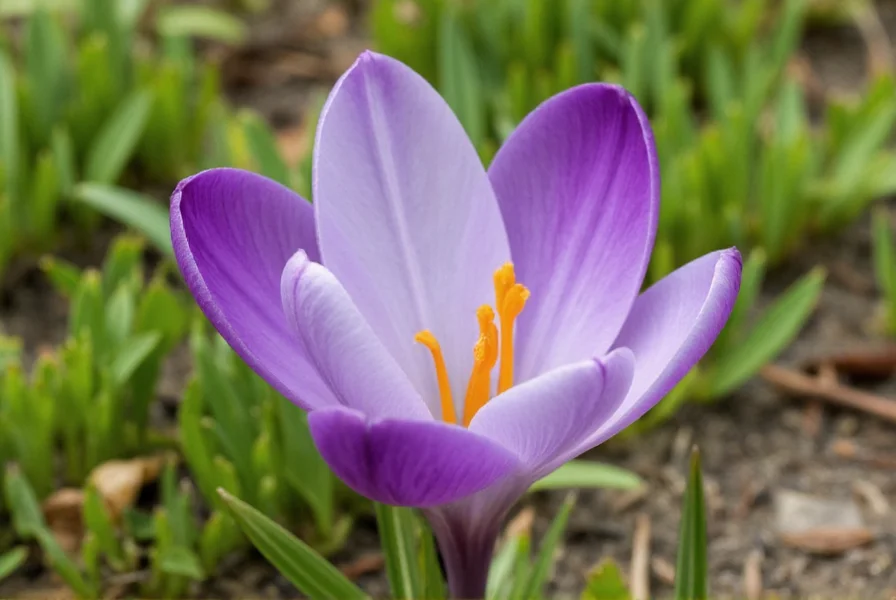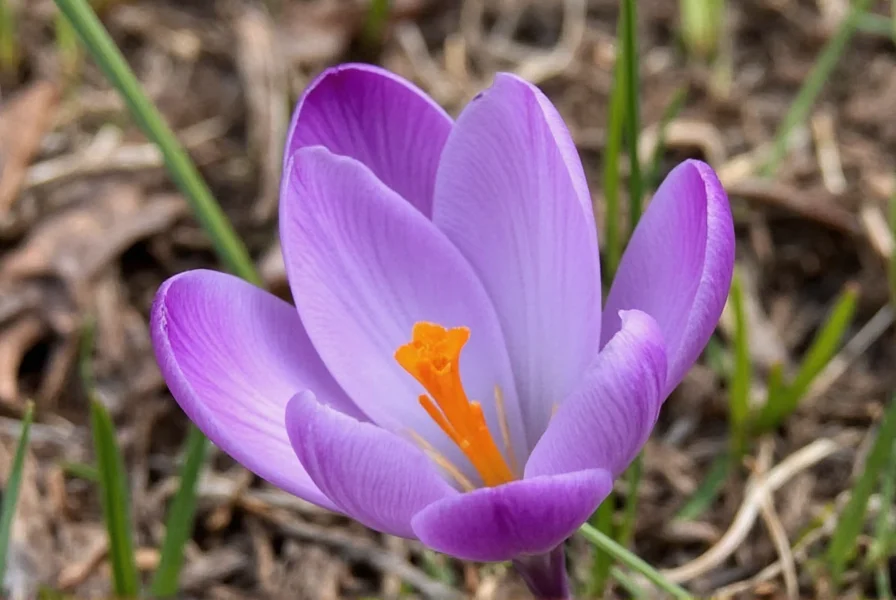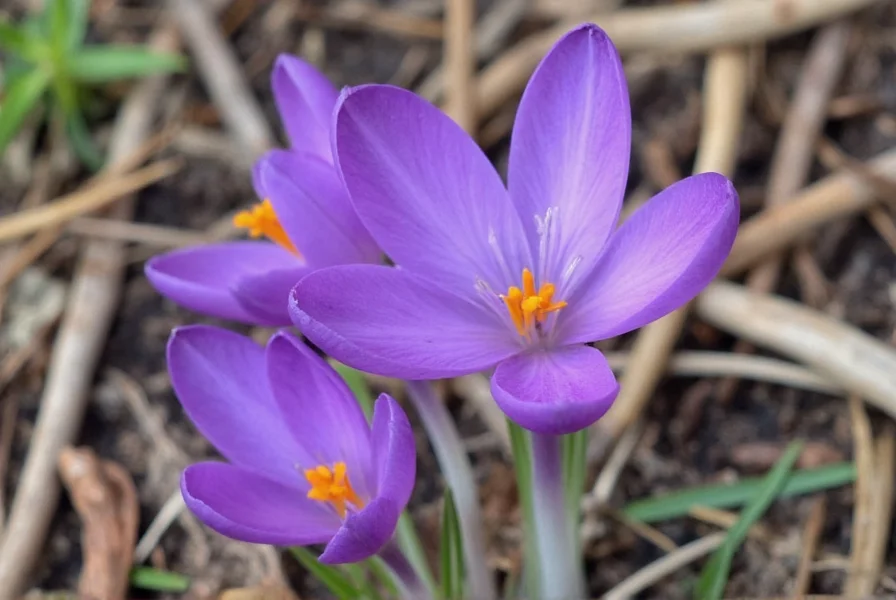Crocus sativus, scientifically classified as Crocus sativus L., stands as one of the most economically significant flowering plants in human history. Unlike other crocus species that bloom in spring, this particular variety flowers in the autumn months, producing distinctive purple blossoms that yield the precious saffron threads. The plant's unique value stems from the fact that only Crocus sativus produces the authentic saffron spice used globally in culinary, medicinal, and dye applications.
Botanical Characteristics of Crocus sativus
This sterile triploid plant cannot reproduce through seeds and must be propagated through corm division. Each Crocus sativus plant typically produces 3-4 purple flowers per growing season, with each flower containing three vivid crimson stigmas that become saffron when dried. The plant grows to approximately 15-20 cm in height and features narrow, grass-like leaves with a central white stripe.

Origin and Historical Significance
While the exact origin of Crocus sativus remains debated among botanists, historical evidence suggests it was first cultivated in Bronze Age Greece. Unlike wild crocus species, Crocus sativus appears to be entirely human-dependent, having been selectively bred over millennia for its saffron-producing capabilities. Ancient civilizations including the Minoans, Egyptians, and Persians valued this plant for its vibrant color, distinctive flavor, and medicinal properties.
The Saffron Harvesting Process
Harvesting saffron from Crocus sativus represents one of agriculture's most labor-intensive processes. Each flower produces only three stigmas, which must be hand-picked at dawn when the flowers first open. Approximately 150,000 flowers (covering an acre of land) yield just 1 kilogram of dried saffron. This explains why saffron remains the world's most expensive spice by weight, with prices often exceeding $5,000 per pound.
| Harvesting Stage | Time Required | Yield per Flower |
|---|---|---|
| Flower picking | 1 hour for 1,500 flowers | 3 stigmas per flower |
| Stigma extraction | 1 hour for 2,000 stigmas | 3 stigmas per flower |
| Drying process | 12-24 hours | 20% weight reduction |
Cultivation Requirements for Crocus sativus
Successful crocus sativus cultivation requirements include specific environmental conditions. The plant thrives in Mediterranean climates with hot, dry summers and cool, wet winters. Ideal growing conditions feature:
- Well-drained, slightly alkaline soil (pH 6-8)
- Full sun exposure
- Summer dormancy period with minimal water
- Autumn flowering triggered by seasonal rains
- Winter protection in colder climates
Commercial saffron production occurs primarily in Iran (producing over 90% of global supply), Spain, India (Kashmir), and Greece. Attempts to grow Crocus sativus outside these traditional regions often face challenges due to climate mismatches.
Differentiating Crocus sativus from Other Species
Understanding the difference between crocus sativus and other crocus species is crucial for proper identification. While many crocus species exist, only Crocus sativus produces saffron. Key distinguishing features include:
- Autumn blooming period (most crocuses bloom in spring)
- Deep purple flowers with three long red stigmas
- Sterile nature (doesn't produce viable seeds)
- Distinctive saffron aroma when stigmas are crushed
Common misidentifications occur with Crocus cartwrightianus (considered the wild ancestor) and Crocus ochrus, neither of which produces saffron of comparable quality.
Medicinal Properties and Modern Research
Traditional medicine systems have utilized Crocus sativus medicinal properties for centuries. Modern research has investigated saffron's potential benefits for:
- Mood regulation and depression management
- Antioxidant and anti-inflammatory effects
- Eye health, particularly age-related macular degeneration
- Potential neuroprotective properties
While promising, most clinical applications require further research. The active compounds crocin, crocetin, and safranal contribute to both saffron's color and potential health benefits.

Sustainable Cultivation Challenges
As demand for authentic saffron grows, sustainable crocus sativus cultivation practices face several challenges:
- Labor shortages for the intensive harvesting process
- Climate change affecting traditional growing regions
- Market competition from saffron substitutes and adulterants
- Preserving genetic diversity of cultivated strains
Organic farming methods and fair trade certification are becoming increasingly important in the saffron industry as consumers seek ethically produced spices.
Frequently Asked Questions
Is Crocus sativus the same as saffron?
Crocus sativus is the plant species that produces saffron. Saffron refers specifically to the dried stigmas harvested from the Crocus sativus flower. So while Crocus sativus is the plant, saffron is the spice derived from it.
Why is saffron so expensive compared to other spices?
Saffron's high cost stems from the extremely labor-intensive harvesting process. Each Crocus sativus flower produces only three stigmas, which must be hand-picked at dawn. It takes approximately 150,000 flowers to yield just one kilogram of dried saffron, making it the world's most expensive spice by weight.
Can I grow Crocus sativus in my garden?
Yes, you can grow Crocus sativus in home gardens if you live in a suitable climate (Mediterranean-type with hot dry summers and cool wet winters). Plant corms in late summer about 3-4 inches deep in well-drained soil with full sun exposure. Note that commercial saffron production requires significant labor for harvesting, so home yields will be minimal.
How can I identify genuine saffron from substitutes?
Genuine saffron from Crocus sativus has distinctive characteristics: threads are deep red with orange tips, when soaked in water they release a golden-yellow color (not red), they have a unique hay-like aroma with subtle bitterness, and they feel somewhat brittle to the touch. Be wary of bright red threads that easily bleed color, as these are often saffron substitutes or adulterants.











 浙公网安备
33010002000092号
浙公网安备
33010002000092号 浙B2-20120091-4
浙B2-20120091-4